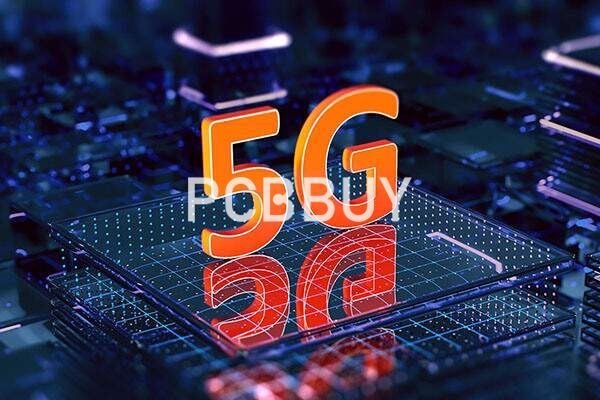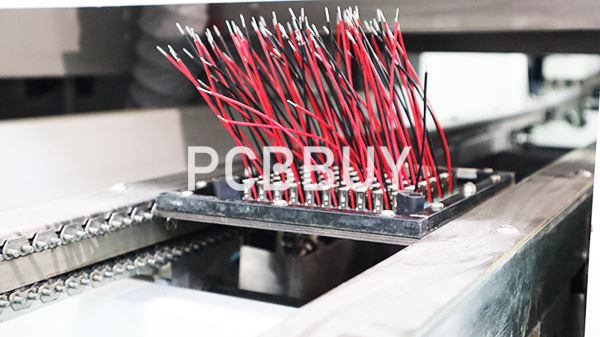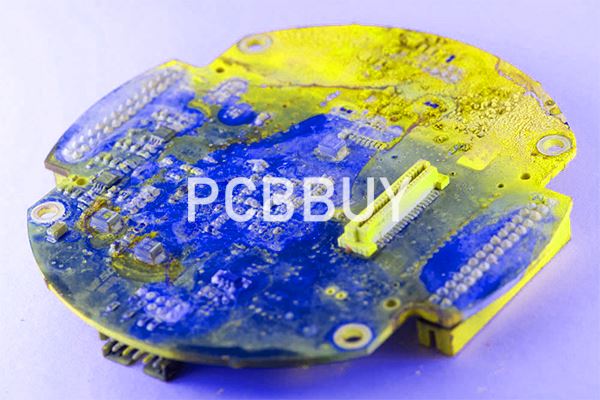What is the Future of PCB Industry in 5G Era?
By:PCBBUY 01/14/2022 09:27

Trend forecasts for the early 2021s center on smaller and more flexible computing options. The push among PCB manufacturers to meet these demands has spurred certain trends within the market. Do you know the future of PCB in 5G era? If you are going to learn more about PCB in 5G, please check and read the content below for more knowledge.

What are the challenges of 5G PCB?
Compared to 4G network, the fifth-generation mobile technology will offer 10-20 times higher transmission rates (up to 1 Gbps), up to 1000 times higher traffic density and 10 times higher connections per square kilometer. The 5G network also aims to provide 1 millisecond latency, 10 times faster than that available with the 4G network, operating on a much wider frequency range.
PCBs will have to simultaneously support data rates and frequencies far higher than current ones, pushing mixed signal design to its limits. While 4G network operates with frequencies all below the 6 GHz threshold (from 600 MHz to 5.925 GHz), 5G network will move the upper frequency limit much higher, up to the millimeter wave region , with bands centered around the frequencies 26 GHz, 30 GHz and 77 GHz.
Use of the EHF (Extremely High Frequency) band represents one of the most difficult challenges that 5G technology imposes on PCB designers. Millimeter waves propagate only by line-of-sight and undergo a strong attenuation, along their way, when they encounter buildings, foliage or adverse weather conditions such as rain or humidity. For this reason, more base stations will be required to support the 5G network. To support such a large number of frequencies, multiple phased array antennas will be needed to allow advanced 5G features such as beamforming.
Both on mobile devices and on base stations, we will therefore have a PCB that integrates a multiplicity of Antenna Array Units (AAU) with extensive use of Massive MIMO technology. In Figure 1 we can see a 5G device prototype developed a few years ago by a leading company in the design of SoCs and telecommunications modems. Three active antennas, extremely compact in size, capable of managing the frequencies required by the 5G standard are clearly visible on the top and on the right side of the PCB.

What are considerations of 5G PCB design?
Most systems now are handling 4G and 3G PCBs. This means that components are transmitting and receiving frequencies that can range from 600 MHz up to 5.925 GHz and bandwidth channels of 20MHz, or 200kHz for IoT systems. When designing PCBs for 5G network systems, the components will need Mm-wave frequencies of 28GHz, 30GHz, and even 77GHz based on the application. For bandwidth channels, 5G systems will be dealing with 100MHz right below and 400 MHz right above 6GHz frequencies.
These higher speeds and higher frequencies will demand the appropriate materials within the PCB to capture and transmit both lower and higher signals at the same time without experiencing signal loss and EMI. In addition, an added problem is that the devices will become lighter, portable, and smaller. With strict weight, size, and space limitations, the PCB materials will have to be flexible and light while accommodating all the microelectronics along the board.
Thinner traces and stricter impedance control will need to be adhered to for the PCB copper tracings (Figure 2). The traditional subtractive etching processes used for 3G and 4G high-speed PCBs may be switched out for modified semi-additive processes. These modified semi-additive processes will provide more precise trace lines and straighter walls.

Why 5G is important for PCB industry?
These connection improvements change the landscape for 5G PCB design. As 5G becomes more widely used, demand increases, raising the standard for adaptable PCB design. While 4G PCBs utilize a baseband unit, remote radio unit, antenna, copper wire and fiber optics, 5G PCBs have centralized and decentralized units with broadband control units and mobile edge computing. 5G
PCBs also require more base stations because — despite higher frequencies — more coverage and antennas are needed. PCB designers, manufacturers and other industry engineers can’t afford to ignore 5G, as it will soon affect every area of the production process:
Customer awareness
As customers become more aware of 5G coverage and 5G-enabled devices are more readily available on the market, PCB manufacturers must take steps to keep up with the increased and evolving demands from the consumer market. Technologies — and the processes and equipment used to support them — must be quickly adaptable as 5G networks change and expand to more areas and devices.
Data traffic
Experts predict 5G to handle one-quarter of all mobile data traffic by 2024 thanks to its speed, low latency, versatility and reliability. This data will include video, mobile gaming, telecommunication and browser and application use. This spike in data traffic demands PCB manufacturers and device designers streamline existing processes and establish new ones to maintain reliable performance free of lagging data transmission or spotty connectivity.
Industry applications
You often hear 5G terminology used when discussing smart phones and other user electronics, but these improvements have expanded 5G coverage into multiple sectors, including the health care, automotive, manufacturing, retail, entertainment and communication industries. Wider usage equates to a higher demand for PCB technology and PCB manufacturers by extension. It also introduces modern-day PCB innovations into industries that aren’t currently using technology to its fullest potential, like agriculture, widening the scope for both 5G and PCBs.
Industry Category











